
Kamen Rider is a Japanese tokusatsu superhero television series and weekly science fiction manga created by manga artist Shotaro Ishinomori. The original airing consisted of a total of 98 episodes and were broadcast from April 3, 1971, to February 10, 1973, on Mainichi Broadcasting System and NET. The manga adaptation was also featured in Shōnen Magazine around the same period. The series has evolved into a franchise with many subsequent annual iterations.
Shinichi Chiba, known internationally as Sonny Chiba, was a Japanese actor and martial artist. Chiba was one of the first actors to achieve stardom through his skills in martial arts, initially in Japan and later before an international audience.
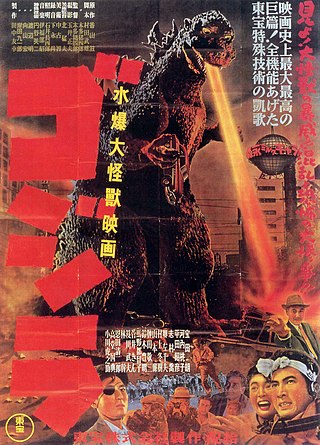
Tokusatsu is a Japanese term for live-action films or television programs that make heavy use of practical special effects. Credited to special effects director Eiji Tsuburaya, tokusatsu mainly refers to science fiction, war, fantasy, or horror media featuring such technology but is also occasionally dubbed a genre itself. Its contemporary use originated in the Japanese mass media around 1958 to explain special effects in an easy-to-understand manner and was popularized during the "first monster boom" (1966-1968). Prior to the monster boom, it was known in Japan as Tokushu gijutsu or shortened Tokugi.

Monthly Afternoon is a Japanese monthly seinen manga anthology published by Kodansha under the Afternoon line of magazines. The first issue was released with a cover date of January 25, 1986. Afternoon has spawned many successful manga series such as Oh My Goddess!, Genshiken, Blade of the Immortal and Big Windup!. It is part of Kodansha's "1day" series, which also includes the magazines Morning and Evening. A spin-off magazine, named good! Afternoon, started publishing on November 7, 2008.

Kamen Rider Black is a Japanese tokusatsu superhero-drama television series. It is the eighth installment in the Kamen Rider series and a co-production between Ishimori Productions and Toei. The series aired on the Mainichi Broadcasting System and the Tokyo Broadcasting System from October 4, 1987, to October 9, 1988. For distribution purposes, Toei refers to this television series as Black Kamen Rider.
Moonlight Mask is a superhero appearing in Japanese tokusatsu and anime television shows and movies since his TV debut in 1958. The six theatrical films were made in black and white/ToeiScope format. Created by writer Kōhan Kawauchi, Moonlight Mask is best described as Japan's answer to The Lone Ranger, Batman and Zorro.
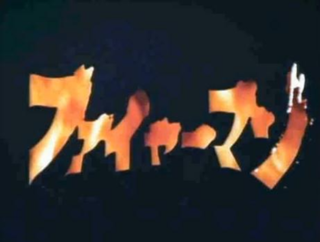
Fireman, known as Magma Man in some markets, is a Japanese tokusatsu television series about the titular superhero who fights kaiju and other villains. Produced by Tsuburaya Productions, the show was broadcast on Nippon Television from January 7 to July 31, 1973, with a total of 30 episodes. This was also one of several shows Tsuburaya did to celebrate the company's 10th anniversary.

Android Kikaider is a tokusatsu television series based on the superhero manga Kikaider by Shotaro Ishinomori. The show was produced by Toei Company and Ishimori Productions, and was broadcast in Japan on NET from July 8, 1972, to May 5, 1973, with a total of 43 episodes.
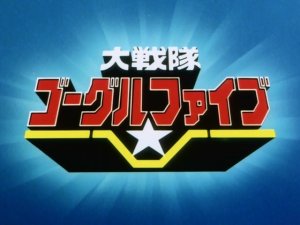
Dai Sentai Goggle-V is a Japanese tokusatsu television series. It was the sixth installment in Toei Company's Super Sentai metaseries of tokusatsu television dramas. It aired on TV Asahi from February 6, 1982, to January 29, 1983, replacing Taiyo Sentai Sun Vulcan and was replaced by Kagaku Sentai Dynaman with a total of 50 episodes. Its international English title as listed by Toei is simply Goggle V.

Denkou Choujin Gridman, known as Gridman the Hyper Agent in some English-speaking territories, is a 1993–1994 Japanese tokusatsu "Giant Hero" series created by Tsuburaya Productions and would be Tsuburaya's last non-Ultra superhero production before Bio Planet WoO. It was the inspiration and source material for DiC Entertainment's Superhuman Samurai Syber-Squad.
Magic Bullet Chronicles Ryukendo is a Japanese superhero-genre tokusatsu television series. It was Takara and We've Inc's first attempt at a tokusatsu series. This series aired at 7:00 JST on TV Aichi from January 8 to December 31, 2006. It is also a partial prequel to the Tomica Hero Series, the cast reprising their characters in the Tomica Hero Rescue Force movie.

Blue SWAT is the thirteenth installment in the Metal Hero Series franchise. It ran from January 30, 1994 to January 29, 1995 for a total of 51 episodes and one theatrical film, aired as part of the 1994 Manga Matsuri, which compiled episodes 1 and 2. Blue SWAT deviated from the Metal Hero trend by using a realistic vibe for the series instead of fantastic, over-the-top action by focusing on the martial arts and gunplay aspects of the series. While the mood of the series appealed to the genre's adult fanbase and older viewers, the show was not well received by children, which resulted in a change into a lighter tone midway through the series. The Blue SWAT team later appeared for a special team-up in the final episodes of Juukou B-Fighter.

Extraordinary Hero Lion-Maru, was a Japanese tokusatsu television series in the Lion-Maru franchise that aired in 1972-1973, produced by P Productions and set during Japan's Sengoku period.
A local hero is a Japanese superhero who is created to represent a particular region of Japan, such as a prefecture or city. They often perform in special martial arts stage shows. Created either by local groups or the local government, a local hero is modeled after the superheroes of Japanese tokusatsu. A local hero is often themed around the city or prefecture's local mythologies or industries, are created to teach the children who watch the stage shows certain things, or are themed after the event that they are used to promote.
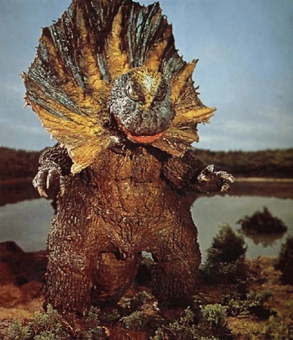
Jirahs is a fictional monster, or kaiju, that first appeared in episode 10 of Tsuburaya Productions' 1966 series Ultraman, where it fought the titular hero and was killed in a duel with him. It has made a few limited appearances since its debut.

A suit actor is a member of, usually, a Japanese tokusatsu production who works similar to a stunt performer. However, the suit actor does all of his or her stunts while in a full costume that normally obscures their identity from the viewer, and the actor's voice is dubbed during after-recording process. The word is typically used when discussing Japanese stunt performers and is rarely used in any other context.

Tensou Sentai Goseiger is the title of Toei Company's 34th entry in its long-running Super Sentai franchise. It follows an angelic motif as well as a trading card theme. It joined Kamen Rider W, and later Kamen Rider OOO, as a program featured in TV Asahi's Super Hero Time programming block. The series ties in with the arcade game Super Sentai Battle: Dice-O, with the characters using cards resembling Carddass cards used in the game to transform and access various weapons, similar to the concept of Kamen Rider Decade and its link to Kamen Rider Battle: Ganbaride. Goseiger's footage was later used for the 2013 Power Rangers series Power Rangers Megaforce and its second season Super Megaforce.

Kaizoku Sentai Gokaiger is Toei Company's 35th entry in its long-running Super Sentai metaseries of Japanese tokusatsu television series following Tensou Sentai Goseiger. It follows a Pirate motif and premiered on TV Asahi on February 13, 2011, joining Kamen Rider OOO and then Kamen Rider Fourze as a program featured in TV Asahi's Super Hero Time programming block, until Gokaiger's conclusion on February 19, 2012. The catchphrase for the series is "Let's make it showy!".
Andro Melos is a Japanese tokusatsu television miniseries produced by Tsuburaya Productions, aired in TBS from February 28 to April 29, 1983 on weekdays. The miniseries was made as an adaptation to the popular Ultra Brothers Story: Andro Melos and Ultra Super Legend: Andro Super Warriors magazine and manga publications, hence it became the first tokusatsu in Japan to be available exclusively on home video. The show's name was inspired by one of the protagonists of 1975 Ultra Series manga The Ultraman, Melos, but both he and the title character are entirely unrelated to each other.
Masashi Ishibashi, was a Japanese actor and martial artist. Ishibashi had an extensive career in Japanese television, where was famous as portraying villains in historical dramas, in roles such as bad lieutenants, shifty merchants, yakuza, bandits, and corrupt priests.















